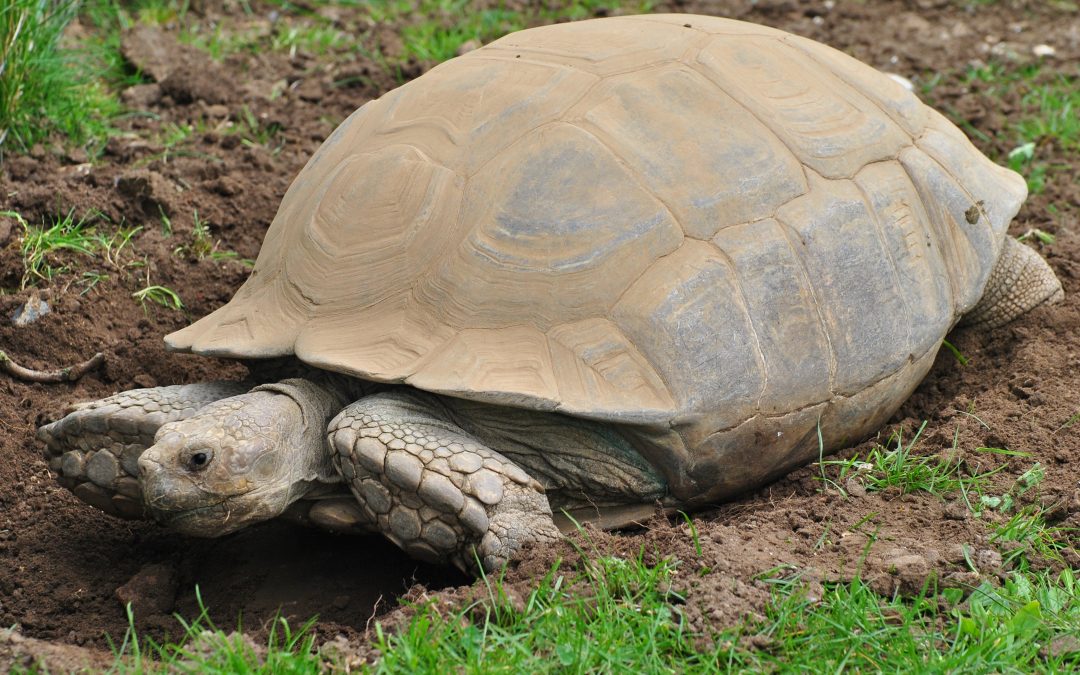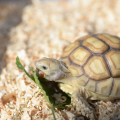Table of Contents
How to keep African sulcatas is a relatively affordable pet; hence its wide popularity. The upside of getting an African sulcatas is that it can easily be obtained for as low as $20 in a pet store. If you choose to acquire it from legit reptile breeders, you can expect a price ranging from $50 to $80 depending on the breeder as well as the age of the African sulcatas.
Do You Have the Space?
One of the first things, you should consider the availability of space in your home as these tortoises can grow to be quite big as it matures. If you want to buy it for a more affordable price, you may opt to search online if there’s any African sulcatas in your area being given up for adoption.
Consider Adopting One
There are also non – profit and rescue organizations you should visit because rescuing one can be really beneficial to the environment and you can acquire them for a relatively cheaper price or even for free.
Housing Needs
At the onset, it could cost you about $125 or more for its housing needs – that usually includes a 10 – 20 gallon tank or a DIY tortoise table complete with other caging materials for decorations and water bowl. The heaters, UVB lights, basking platforms, hideouts, substrate and other additional fixtures needed could cost more or less $300.
Food
You’ll probably spend around $40 per week for 30 pounds of vegetables and fruit unless of course you choose to just feed them with grass or weeds found in your backyard. They can live with that but as a keeper, it’s probably best to provide them with food that has the right nutrients so that they can grow healthily.
Cage Maintenance
Don’t forget to factor in the expense for cage maintenance to remove dirt and bacteria especially in their water bowls. Tortoises pretty much poop a lot (that’s basically because they are herbivores – they tend to digest and defecate food easily) which means that their tank or enclosure should ideally be cleaned at least every other day to avoid the incidence of parasites, infections and shell rot.
You will also want to factor in the yearly electricity costs of keeping a terrarium clean, tempered, lit and conditioned to the needs of the sulcata tortoise.
You also need to buy a laying bin if in case you’d be breeding your sulcata tortoises. You can either buy some kind of reptile container or a standard laying bin in pet stores. The breeding cost will vary depending on the quality, so you should budget about $50 or more for these extra costs.
Get a Pet Insurance
Sulcata tortoises will need minimal medical attention but it is strongly suggested that you take your baby sulcatas to the vet after acquiring them to make sure that they are healthy before bringing them home and mixing them with your other tortoise or turtle species.
You’ll pretty much need to bring your tortoise to the vet for a quick check up if you choose to breed them as well. But generally speaking, you won’t have to worry about huge medical costs or even a pet insurance for these animals – remember, they live very long and healthy lives, there’s an even bigger chance of you acquiring an illness than them.
Tortoises must be treated in a way that an expensive pure bred puppy would be treated not because they are hard to maintain but because they can still make quite a dent to your bank account, nevertheless they are fun and adorable lifelong friends which makes them worth your time and money.
Smuggling African Sulcatas
Smuggling of these tortoises particularly in African countries like Ghana, Senegal, Togo and Mali are evident because enforcement is insufficient which is why wildlife advocates are aiming to address this problem. The good thing is that these African sulcata tortoises thrives in captivity and breeds easily in countries like United States and Japan making it enough to supply the demand for these pets.
In Senegal, these tortoises are more than just pets, they are symbols of longevity, happiness and fertility which is why conservation activities are much easier to promote and maintain compared to other African regions.
In fact, in 1993, a European foundation called Fondation Rurale pour le Developpement in partnership with Station d’Observation et de Protection des Tortues des Maures established a program to educate the people of Senegal on how to protect illegal smuggling of pet tortoises.
They’ve also established an information, breeding and protection center and even initiated some conservation projects to further protect these species, which is why despite of the continuous desertification threat in the country, there are still a lot of people who are willing to preserve these wildlife gems.
A Growing Concern
In other African countries (such as Ethiopia, Nigeria, Mali and Chad) where sulcata tortoises are native and previously abundant are increasingly declining in terms of population because of natural habitat loss due to domestic livestock and continuous urbanization.
Aside from that, African nomads and ethnic groups that are residing in the Sahara desert also contribute to this decrease in population because they are eating these creatures and some groups even use the tortoise’s body parts. In Japan, African sulcatas are reportedly being used to create longevity potions.
It will take about 15 years before African spurred thigh tortoise reaches full maturity in the wild, which is why juvenile sulcatas are the ones targeted for illegal trades. This raises a huge concern among wildlife experts and legit breeders in its native African origins because these creatures could face the possibility of extinction.






 Author and long-time animal lover. Sharing knowledge on pet care through experience and the written word.
Author and long-time animal lover. Sharing knowledge on pet care through experience and the written word. 